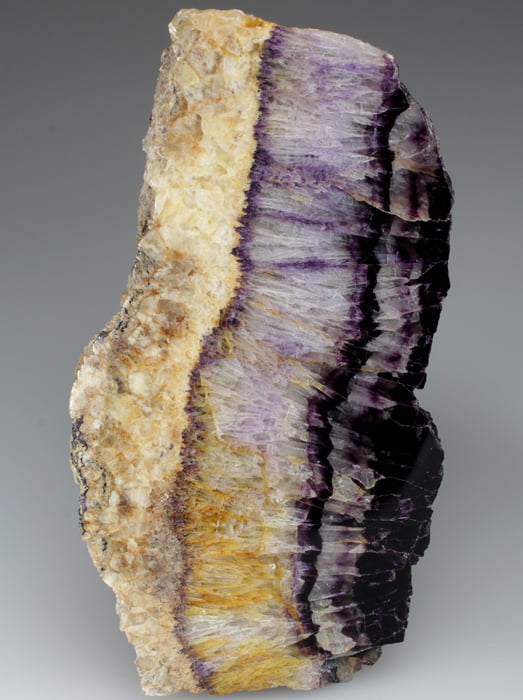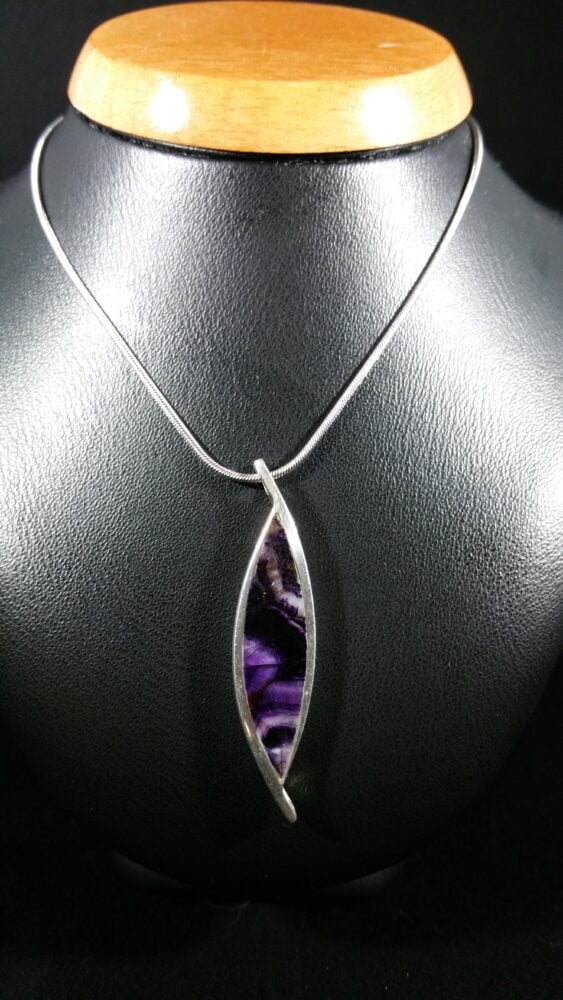Discovered almost two thousand years ago by the Romans, Blue John is a rare natural variety of Calcium Fluorite, highly distinctive and prized because of its characteristic bands of coloured veins. The only known deposit of this unusual mineral occurs in a hill to the west of Castleton, Hope Valley, Derbyshire, England, opposite the mountain known as ‘Mam Tor’, the shivering mountain.
The Romans settled just three miles from the area at Brough. It is likely that they were searching for deposits of lead ore and struck upon an outcrop of Blue John by chance. Being keen mineralogists, they would instantly have recognised the outstanding beauty of their find. At this time, the technology must certainly have existed to enable the complicated process of turning and polishing the stone. The principal colours are purple and white, disposed in undulating bands and usually separated by a third band, the two colours being mixed, assumed to the tint of the flame.
Splendid specimens of Blue John Stone can be found in important collections throughout the world, Chatsworth House being one of the finest. The mines are sadly now largely extinct, however, small veins and nodules of fine quality stone of sufficient size for jewellery can still be found.
We have a fabulous collection of Blue John from our various craftsmen at our Bakewell shop and are edeavouring to present a cross section of those one-off pieces on the website.
Blue John is a very crystallised formation and occasionally surface marks can be seen. This is not detrimental to the stone and in fact enhances its individuality.
Our craftsmen also specialise in reversible pendants, with Blue John on one side and another stone like Whitby Jet or Blue Sandstone on the other.
An explanatory leaflet all about Blue John Stone, history, etc, is included with every order.




